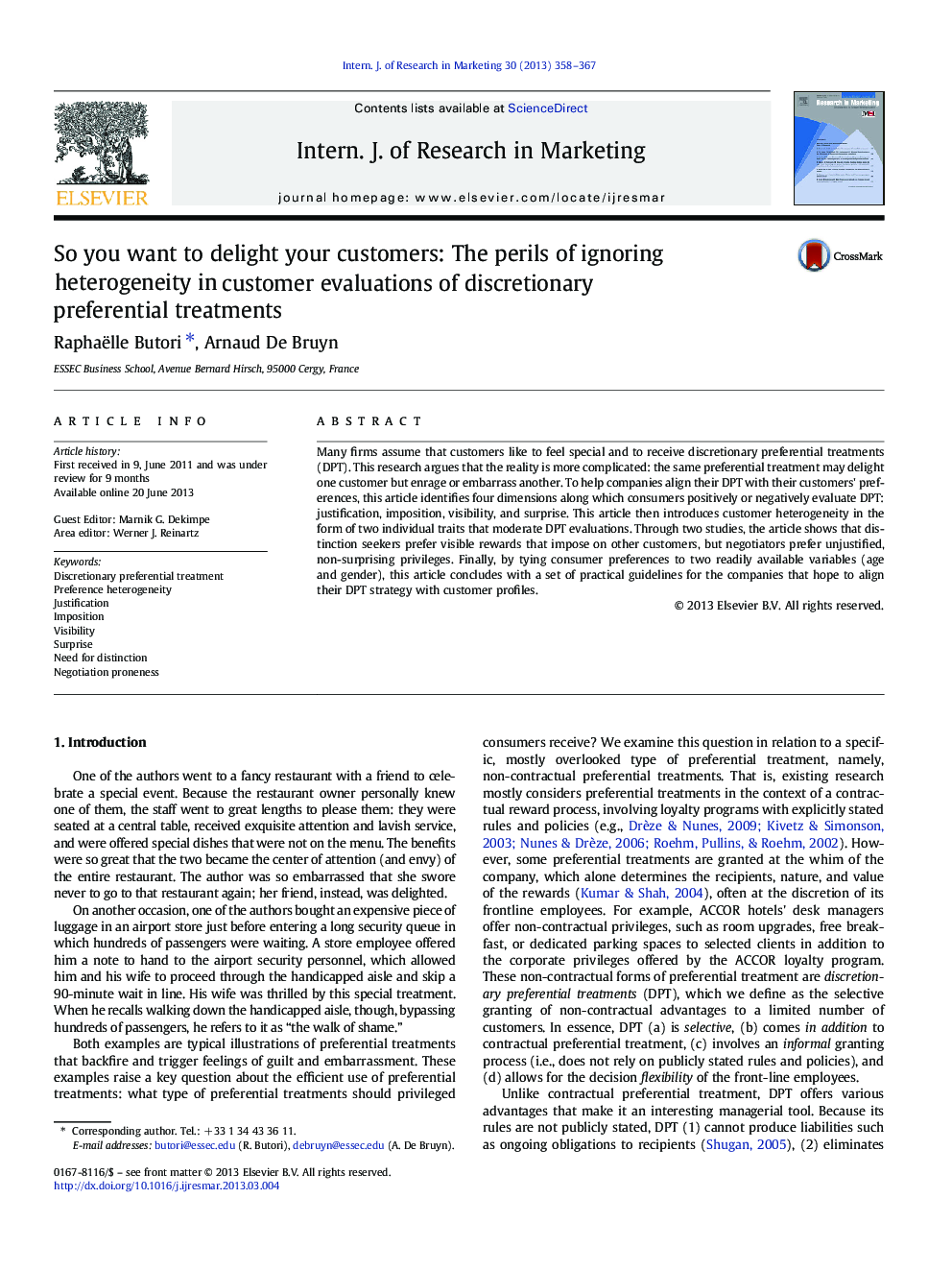| Article ID | Journal | Published Year | Pages | File Type |
|---|---|---|---|---|
| 880114 | International Journal of Research in Marketing | 2013 | 10 Pages |
•Consumers sometimes prefer non-preferential treatment over preferential treatment.•Most consumers prefer legitimate, imposing, non-visible and surprising discretionary preferential treatments.•Need for distinction and negotiation proneness moderates these evaluations.•Distinction seekers have stronger preferences for imposing and visible rewards.•Negotiators have stronger preferences for illegitimate and non-surprising rewards.
Many firms assume that customers like to feel special and to receive discretionary preferential treatments (DPT). This research argues that the reality is more complicated: the same preferential treatment may delight one customer but enrage or embarrass another. To help companies align their DPT with their customers' preferences, this article identifies four dimensions along which consumers positively or negatively evaluate DPT: justification, imposition, visibility, and surprise. This article then introduces customer heterogeneity in the form of two individual traits that moderate DPT evaluations. Through two studies, the article shows that distinction seekers prefer visible rewards that impose on other customers, but negotiators prefer unjustified, non-surprising privileges. Finally, by tying consumer preferences to two readily available variables (age and gender), this article concludes with a set of practical guidelines for the companies that hope to align their DPT strategy with customer profiles.
